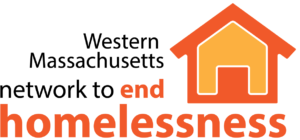Congratulations to Houston, which announced today that it has effectively ended veteran homelessness. Houston is the second major US City to end veteran homelessness. New Orleans announced in April that it had done the same.
Houston’s Mayor Annise Parker:
From regular provider coordination meetings and aligning local and federal resources, to dedicated street outreach teams and a coordinated assessment system that identifies, assesses, refers and navigates homeless veterans to housing, the Houston region has come together as a team to transform our homeless response system to effectively end veteran homelessness.”
We know that new people–including veterans–regularly experience housing emergencies and may become homeless. So, what doe it mean to end veteran homelessness? The US Interagency Council on Homelessness has recently provided guidance.
These are the standards to meet:
- The community took steps needed to identify all Veterans experiencing homelessness, including Veterans who were unsheltered, as well as Veterans in shelter, in Grant Per Diem programs and other VA residential programs, in other transitional housing programs, and in other temporary institutional settings. This identification of Veterans included both Veterans that meet the definition of chronic homelessness and Veterans that are experiencing homelessness but do not meet the definition of chronic homelessness. The definition of Veteran used includes all persons who served in the armed forces, regardless of how long they served or the type of discharge they received.
- There are no longer any Veterans experiencing unsheltered homelessness in the community. Some Veterans may not yet be in permanent housing, but all are now in some form of shelter (emergency shelter, treatment programs, transitional programs, other temporary institutional settings, etc…)
- The community has the resources and a plan and timeline for providing permanent housing opportunities to all Veterans who are currently sheltered but are still experiencing homelessness. The community has identified the programs and resources that will be used to provide those housing opportunities and can provide those housing opportunities quickly and without barriers to entry, using Housing First principles and practices.
- The community has resources, plans, and systems in place for identifying (1) Veterans that may have been missed in initial efforts to identify Veterans, (2) at-risk Veterans and (3) Veterans newly experiencing homelessness in the future.
- The community has adequate outreach and engagement strategies in place to be confident that they can identify such Veterans.
- The community has an adequate level of resources and the capacity to provide appropriate services to prevent homelessness for at-risk Veterans in the future.
- The community can provide options for shelter and has identified the programs and resources that will be used to provide quick access to permanent housing opportunities for these Veterans not addressed in the initial work.
- The community has an adequate level of resources and appropriate plans and services in place to ensure the housing stability of formerly-homeless Veterans currently in permanent housing or who enter permanent housing in the future.
The USICH has put together questions to help assess whether a community has reached the point of ending veteran homelessness.
Let’s keep working to make sure that our communities can join the list of places that end veteran homelessness in 2015!

